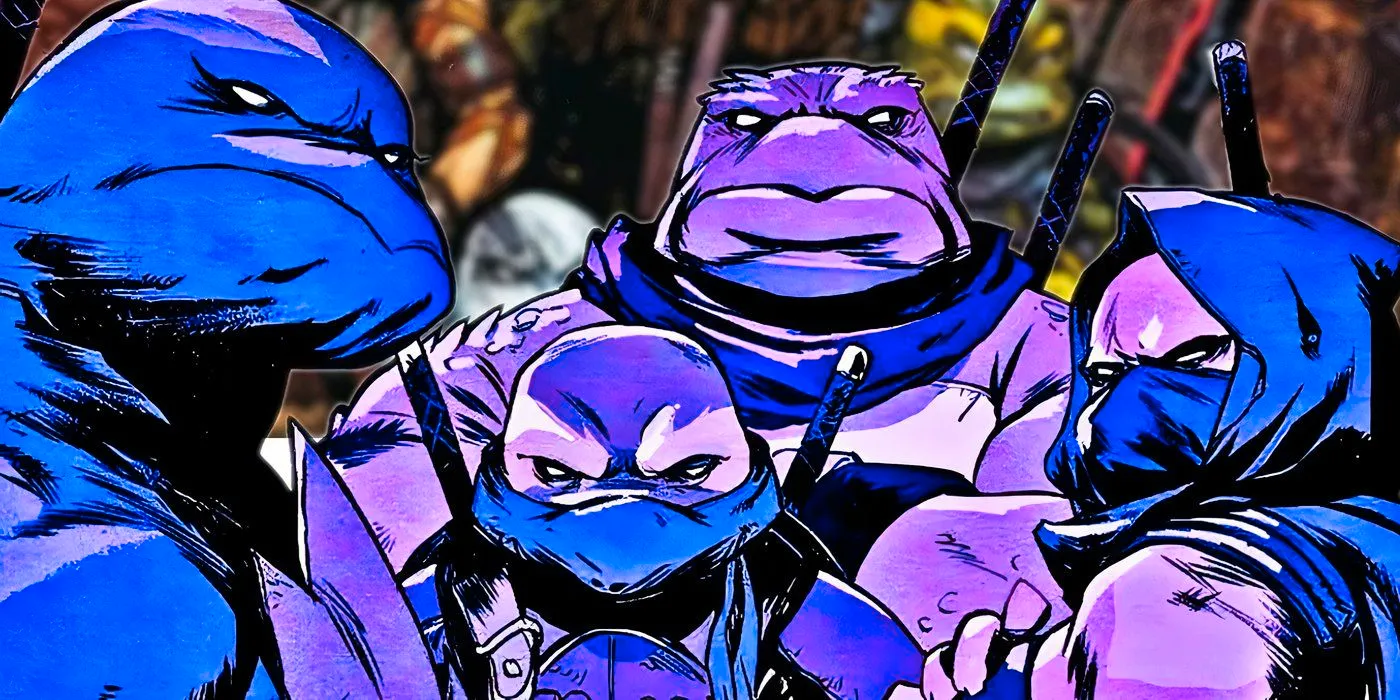The New Turtles of TMNT exhibit more "Modern" qualities than the original team to set them apart.
Regarding the Last Ronin II - Re-Evolution series, Tom is questioned, "What were your main priorities when developing a new generation of Teenage Mutant Ninja Turtles?" "How did you make them as unique from each other as the originals?" came next. Tom says that the primary guideline for writing this new group of Turtles was to "capture the same tight familial bond between our new mutant heroes" while infusing them with "modern" traits like "social anxiety, autism, heavy integration of technology into everyday life, etc." Tom answers these questions in stride.
Tom says, "Sometimes an old stew recipe works just fine, but tastes even better with a few new spices added," nailing what makes Uno, Moja, Odyn, and Yi fit right into TMNT's universe. He then has to be careful about how he layers these traits "on top of the tried-and-true aspects of what has made the original Turtles so beloved for so long." Moreover, with the new Turtles rejecting the recognizable colored bandanas of their forebears, their different visual looks and deliberately assigned modern features become much more important for consideration.
Uno, Moja, Odyn, and Yi Still Hold Familial Values Like Their Predecessors
With Tom's desire to do Leo, Donnie, Mikey, and Raph's legacies directly translating to how he writes the new Turtles and how they will individually evolve by the time TMNT: The Last Ronin II - Re-Evolution ends, Tom makes some really great observations regarding who the Turtles are at their core and what they mean to each other as brothers. Therefore, even if Uno, Moja, Odyn, and Yi are unusual but familiar additions to the main TMNT mythos, adding them some modern-day quirks and qualities will only help these heroes become the best version of the Teenage Mutant Ninja Turtles seen thus far.
Originally starting with Kevin Eastman and Peter Laird's Comics in the 1980s, Teenage Mutant Ninja Turtles (TMNT) is a multi-media series. Their comic books grew over years to include toys, movies, TV series, and video games. Most famously, the animated Teenage Mutant Ninja Turtles ran for almost ten years and have grown to be a nostalgic mainstay of the 1980s and 1990s. Apart from the trilogy of live-action films in the 1990s and the more recent films Teenage Mutant Ninja Turtles and its sequel Teenage Mutant Ninja Turtles: Out of the Shadows, several other movies have included the four anthropomorphic turtle brothers (Leonardo, Michelangelo, Donatello, and Raphael).
The Teenage Mutant Ninja Turtles Are Approaching a New Period of Storytelling
With an evolved band of Turtles — Uno, Moja, Odyn, and Yi — replacing the OG group of Leonardo, Donatello, Michelangelo, and Raphael, the Teenage Mutant Ninja Turtles are ushering in a new era of storytelling. In an interview with Tom Waltz, author of the first hundred issues of IDW Publishing's TMNT and one of the authors of TMNT: The Last Ronin II - Re-Evolution, Tom reveals what motivated the next generation of Turtles as well as what distinguishes them from those that came before.
With a brand-new debut issue penned by Jason Aaron with artwork by Rafael Albuquerque, Joëlle Jones, Cliff Chiang, and Chris Burnham, IDW, which recently ended its epic 150-issue run, is about to relauncher TMNT's comic universe. In an upcoming interview with Screen Rant, Tom Waltz reveals not only did he want Uno, Moja, Odyn, and Yi's dynamic to feel "familiar but different," but also took inspiration from "modern personality/societal traits" to craft these characters to perfection. To tide fans over until this relaunch hits stands in July.
With the striking sales numbers for the Hit Comic Series, Teenage Mutant Ninja Turtles: The Last Ronin, TMNT has maintained comic popularity.
With a New Generation of Turtles, the TMNT series is sure to flourish with updated sets of heroes and villains. The show's writers are putting a fresh twist to the narrative even if their new Turtle character designs are reminiscent of their forebears. New writers and artists brought in by the show's creators will provide a distinctive look and feel for the program. Furthermore, the program is including more contemporary components such social media and technology. This will enable the show to appeal to younger generations among other audiences.
Though the show features a new generation of Turtles, many of the iconic characters—including Splinter, April O'Neil, and Casey Jones—still abound. This enables the program to strike a mix between the old and the new, therefore appealing to both new viewers and lifetime followers.



